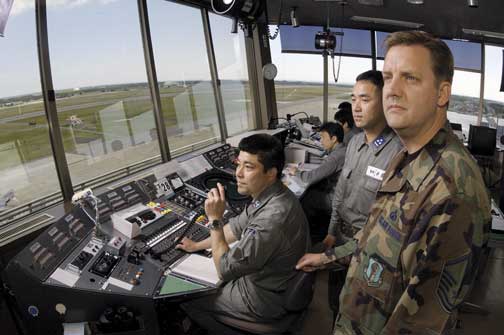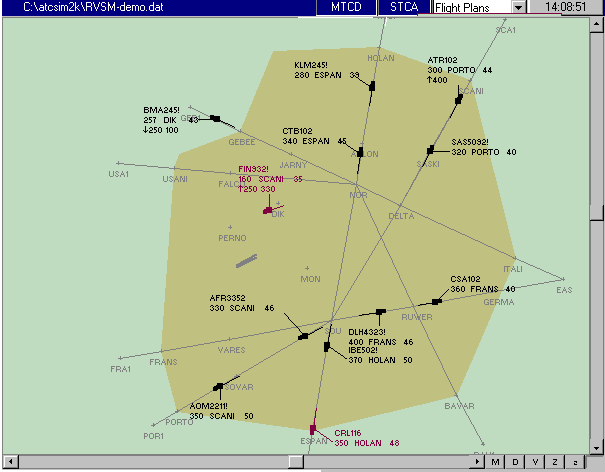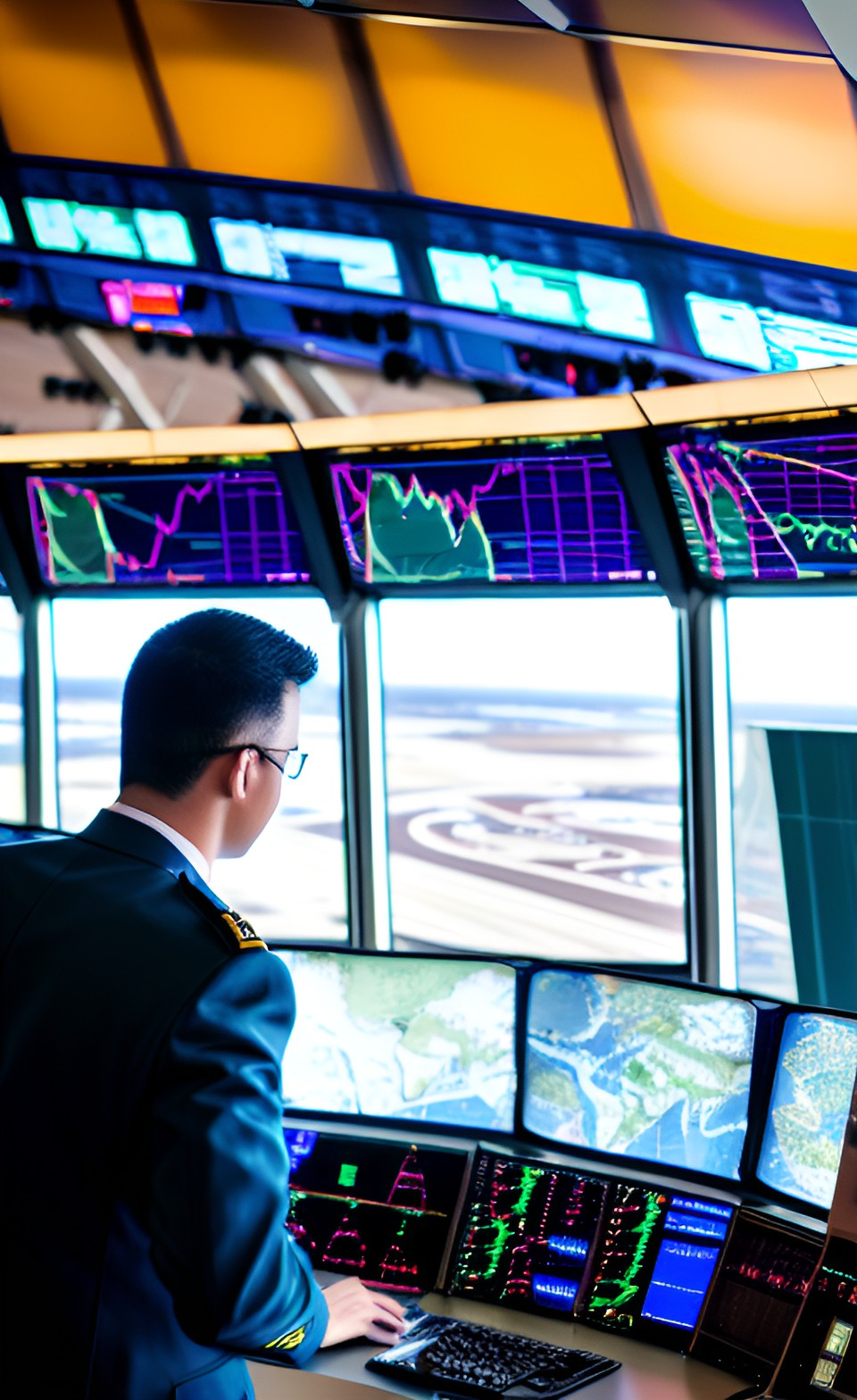- Air Homepage
- Employment
- Live Air Traffic Control
A live air traffic control system is essential for safety
Find more about weather and aviation.
Why do we need live air traffic control? Have you ever been fascinated by an aeroplane's flight as a kid? What's the point of this? There are several reasons why people might find air traffic control interesting:
- Air traffic control is a highly complex, demanding job that requires a lot of skill and training. Air traffic controllers use a variety of tools and technologies to manage air traffic safely and efficiently.
- Air traffic control plays a big role in making air travel safe. Learn about how air traffic controllers keep planes separated and prevent collisions by following various protocols and procedures.
- Working under high levels of stress and pressure, air traffic controllers often make split-second decisions that can have a huge impact on air travel safety. It might be interesting to learn about the challenges air traffic controllers face every day.
- The future of air traffic control: As air travel grows and evolves, so will air traffic control. The future of air traffic control will be shaped by technological advancements and innovations, like automation, artificial intelligence, and drones.
Wouldn't it be nice if all airplanes ran smoothly? Learn how live air traffic controllers guide aircraft in the air.
Some estimates say there are 50,000 airplanes in the skies of the United States every day. There's a reason they don't collide - live air traffic control.
Air traffic control coordinates the movements of hundreds of planes at once and keeps them safe from one another. As well as ensuring smooth takeoffs and landings, live air traffic control guides pilots through bad weather.
Air Traffic Control's Unsung Heroes
Is it that easy? Nope. In order to keep their cool under highly stressful conditions, air traffic controllers go through rigorous training and careful selection.
Additionally, they use a good variety of equipment and wireless communication devices to track and direct planes. All aircraft, whether they're commercial, private, or military, need air traffic control. We wouldn't have great songs like this without them.
Got more here on Youtube
Put yourself to the test - A simulation of air traffic control can give you an idea of what it's like to be an air traffic controller. You might experience the stress involved in guiding multiple planes safely while playing air traffic control. It's part of the game's purpose.
The components of a live air traffic control system
Air traffic control can be managed strategically thanks to the monitoring network. There's a US network that includes:
- Air Traffic Control System Command Center (ATCSCC), which oversees air traffic control. The agency manages and coordinates air traffic flow, makes sure flights are safely separated, and minimizes delays.
- The Air Route Traffic Control Centers (ARTCC) manage the traffic in a specific area. Radar and other technologies are used to track planes in their airspace, and they provide pilots with guidance to stay safe.
- Aircraft departures and approaches are handled by Terminal Radar Approach Control (TRACON). The facility manages aircraft departures and approaches around a major airport. To guide planes in and out of the airport safely and efficiently, they use radar.
- The Air Traffic Control Tower (ATCT) handles ground traffic, takeoffs and landings. The ATCT uses radar and visual observations to guide planes on the ground and in the air, and they coordinate with other facilities, like TRACON and ARTCC, to keep traffic moving safely.
- Private planes get weather and air route info from Flight Service Stations (FSS). They offer pre-flight briefings, in-flight advisory services, and emergency assistance. Pilots get up-to-date weather information and other factors that might affect their flight from FSS personnel using a variety of tools and technologies.
You can find aviation jobs at your favorite information source. There can be more than one air traffic controller watching a plane. Whenever an aircraft leaves one air traffic division and enters another, control and information are seamlessly transferred.
The biggest challenge to air traffic control is the growing number of airplanes and insufficient runways. As air traffic increases, airports get crowded because there aren't enough runways for all the planes. Airlines can face delays, safety risks, and higher operating costs as a result. With more planes, air traffic controllers have to make sure the airspace is safe and efficient. Overcrowding and delays in air traffic are caused by the limited number of airports and runways.
To ensure safe and fast air traffic, NASA and FAA are developing software solutions and training programs. It won't reduce the need for human air traffic controllers, though. These technologies will help reduce mistakes and improve communication between controllers and pilots. Furthermore, these technologies will make air traffic control more efficient, allowing for more flights in less time. Also, automation would reduce random errors
Take a look at this career option. Check out the Environmental Health & Safety Jobs page for more ideas.
AI (artificial intelligence) is becoming more and more important in ATC.
ATC uses AI to analyze big data, like weather forecasts, flight plans, and radar data, to make decisions faster and more efficiently. Also, AI can help reduce congestion and delays by optimizing aircraft routing.
ATC uses AI to develop advanced decision support systems. Air traffic controllers use these systems to analyze data and make recommendations. AI can predict weather patterns and recommend routes to avoid turbulence or severe weather, for example. It can also help identify potential conflicts between aircraft and recommend alternate routes.
Autonomous aircraft are another way AI is being used in ATC. AI algorithms help autonomous aircraft navigate and make decisions without direct human intervention. Despite still being in the early stages of development, autonomous aircraft could revolutionize air travel by reducing the need for human pilots and air traffic controllers.
AI can improve safety, reduce delays, and optimize air traffic flow by integrating into ATC systems. It's still important to make sure these systems are thoroughly tested and validated before they're deployed.
Search this site for more information now.
We want you to get there safely, don't we? Live Air Traffic Control - Do you want to get there safely?
Live air traffic control is becoming increasingly necessary. It does not diminish. Technology has not yet replaced these individuals.
Do you have concerns about air pollution in your area??
Perhaps modelling air pollution will provide the answers to your question.
That is what I do on a full-time basis. Find out if it is necessary for your project.
Have your Say...
on the StuffintheAir facebook page
Other topics listed in these guides:
The Stuff-in-the-Air Site Map
And,
Thank you to my research and writing assistants, ChatGPT and WordTune, as well as Wombo and others for the images.
GPT-4, OpenAI's large-scale language generation model (and others provided by Google and Meta), helped generate this text. As soon as draft language is generated, the author reviews, edits, and revises it to their own liking and is responsible for the content.





New! Comments
Do you like what you see here? Please let us know in the box below.